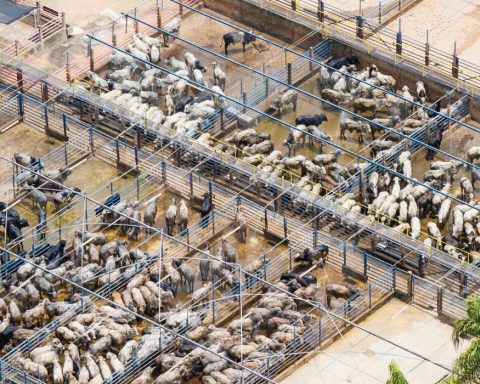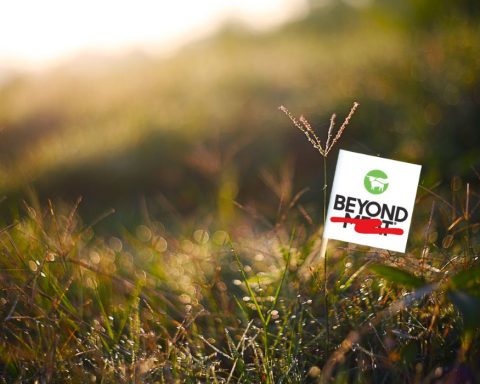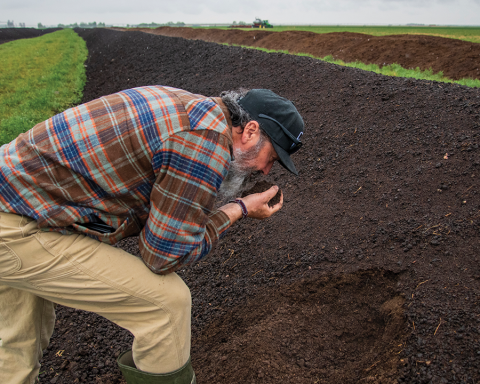Drinking water shouldn’t make you sick. But for several harrowing months ten years ago, turning on the tap in the farming town of Walkerton, Ontario meant risking exposure to a deadly strain of E. coli—o157:h7.
What happened that May has been well documented. After heavy rainfall washed bacteria from cattle manure into the town well, known for years to be vulnerable to contamination, residents began to experience bloody diarrhea, vomiting, cramps, and fever—all symptoms of E. coli.
Although the Walkerton Public Utilities Commission received a fax confirming the presence of E. coli in the water on May 15, 2000, it assured the Medical Health Officer that the water was safe. But on May 23, the Medical Health Officer came forward with his own results and publicly declared Canada’s worst E. coli outbreak.
Almost half the town’s 5,000 people were affected. More than 2,300 people became ill and seven people died, including a two year old girl who was visiting Walkerton on Mother’s Day. The cost of cleanup, including human suffering, was estimated at $155 million. Some residents still suffer side effects from the disease, including diabetes, irritable bowel syndrome, high blood pressure, and kidney damage. Some are on medication for the rest of their lives.
The 2002 Walkerton inquiry, led by Justice Dennis O’Connor, found that the tragedy was preventable. He blamed it on the mismanagement of the Public Utilities Commission where staff routinely falsified daily operating reports; some didn’t even realize that E. coli was a health hazard. But he also blamed the tragedy on the Ontario government’s budget cuts and the Ministry of Environment’s ineptitude.
Indeed, nine months before Walkerton’s outbreak, an eerily similar E. coli contamination occurred at a fair in New York state. The associated inquiry report was published just six weeks before Walkerton’s outbreak.
Lessons learned?
“Walkerton could have occurred in a number of locations,” says Bruce Davidson, co-founder of Concerned Walkerton Citizens. “The provision of drinking water in many of our small and remote communities was not being actualized as a professional operation.”
Eleven months after Walkerton, an outbreak of Cryptosporidium occurred in North Battleford, Saskatchewan, causing 6,000 to fall ill.
“North Battleford was an even clearer example than Walkerton of municipal mismanagement,” says Dr. Steve Hrudey, drinking water expert and professor emeritus at the University of Alberta. “Probably the most tangible example is that they had a training budget of $750 and took pride in never spending a cent of it.”
The Walkerton tragedy served as a catalyst for drinking water policy reform. Justice O’Connor provided 121 recommendations, all of which are being implemented. He favoured the multi-barrier approach, which protects water throughout its journey from source to tap. Key components of the approach are a good source of water, effective treatment, a secure distribution system, continuous monitoring of the system, and an appropriate response to adverse results.
Before Walkerton, water plants had been approved using a voluntary certificate system, which often meant little oversight. Now all plants must be licensed, and certification for operators is mandatory. Ontario also appointed a Chief Drinking Water Inspector in 2003, whose latest report finds that 99.85 per cent of submitted water quality tests meet provincial standards. These tests cover systems that serve 80 per cent of Ontario’s population.
O’Connor also recommended better drinking water education and training for owners, operators, and operating authorities of drinking water systems. The Walkerton Clean Water Centre, a Government of Ontario agency, opened its doors in 2005 and has trained more than 2,700 people. The Centre also showcases new water treatment technologies and will be moving into a Leadership in Energy and Environmental Design Gold building in June 2010.
“Now we’re known as the education outreach for other communities to learn about the provision of safe drinking water,” says Walkerton Mayor Charlie Bagnato. “It’s just phenomenal how we’ve turned infamy into excellence.”
While Bagnato believes the checks and balances provided by the reformed drinking water regime mean “the chances of another Walkerton are virtually nil,” Davidson isn’t so sure.
“With Walkerton being ten years in the rearview mirror, the tendency is to say we’ve got it covered,” cautions Davidson. He worries about increasing watershed pressures from agriculture, industry, chemical use, and urban sprawl.
His concerns aren’t unfounded. At publication time, there were 975 boil water advisories and 23 do not consume warnings in Canada—including 116 boil water advisories for First Nations reserves.
Third world conditions, first world country.
Drinking water problems disproportionately affect First Nations communities, which are the fiduciary responsibility of the federal government.
“This is a perpetual crisis,” says Tony Clarke, Executive Director of the Polaris Institute. “As long as the Canadian Safe Drinking Water Guidelines are applied across the country, but not to reserves, we’re going to be faced with ongoing problems.”
In autumn 2005, there was an E. coli outbreak on the First Nations reserve Kashechewan, populated by 1,900 Cree near James Bay, Ontario. The community had been under various boil-water advisories for years.
For eleven days, the provincial and federal governments bickered over whose responsibility it was to deal with the outbreak. In the meantime, stories of Kashechewan’s desperate living conditions, overcrowding, sky-high unemployment, and illness began to emerge. Finally, the provincial government evacuated the reserve.
Kashechewan’s outbreak, like Walkerton’s, occurred primarily because of a lack of water operator training. Beaver dams were causing sewage to flow directly into Red Willow Creek, the reserve’s water source. Engineering consultants had told the operators three years before that the dams should be removed.
Dr. Hrudey laments this knowledge gap. “Most of the communities with [water] trouble have high unemployment or underemployment,” he says, suggesting training and supporting operators would help remedy this. “People running facilities in remote locations can’t be expected to be able to know and do everything. But you can train them well enough to recognize when they’re dealing with trouble.”
Indian and Northern Affairs Canada’s (INAC) 2006 Plan of Action for Drinking Water in First Nations Communities is meant to provide training and infrastructure support. The latest progress report shows that while a third of First Nations water treatment operators still lack certification, the number of high-risk drinking water systems in First Nation communities has fallen from 85 to 48 in two years.
But 48 communities is still too many, begging the question of whether a nonreserve water system would be allowed to languish. While INAC allocates $250 to $300 million per year for First Nations water infrastructure, Lee Ahenakew, Proprietor at Canadian First Nations consulting firm 4Sight, estimates the cost of fully connecting all First Nations communities to a clean water supply is $5 billion.
In a 2008 Polaris Institute report, Boiling Point, six high-risk First Nations communities were profiled. The report highlighted deplorable conditions such as astronomical rates of gastrointestinal illness, overflowing outhouses, one community under a 13-year boil-water advisory, and high suicide rates. While some of these communities have seen improvement since then, “there are lots of communities near the point of explosion,” says Clarke. “We need a regulatory regime that is aimed at safeguarding drinking water for First Nations communities.”
Ontario Environment Minister John Gerretsen says that First Nations issues were among his concerns when drafting the soon-to-be-released Water Opportunities Act. “It would not be right for Ontario to export our tremendous [water treatment] technology without first making sure that our people, including First Nations, have the best protection when it comes to the quality of their water.”
But Chief M. Bryan LaForme of the Mississaugas of the New Credit First Nation has yet to experience this protection. “Walkerton had an effect in mainstream Ontario, but not in First Nations,” he says. Twenty- five per cent of his southern Ontario community does not have access to clean drinking water. “We’re still underfunded. We’re still under capacity. All my staff have to multitask.”
The danger of indifference.
Clearly, there’s still work to be done. Even though most urban areas have safe tap water, the Canadian Water Attitudes Study finds that 21 per cent of Canadians are not confident in their drinking water. And there are no legally enforceable national drinking water standards.
But Dr. Hrudey believes change won’t happen until Canadians demand it—and are willing to pay the full cost of safe delivery. “We’ve gotten used to the idea that drinking water outbreaks are rare, so why should we care?” he says. “We understand that if you don’t pay for cable, we can’t watch TV. But Canadians don’t [equate] their cable bill with their water bill.”
Davidson shares his experiences with getting people to understand the costs of water safety.
“I don’t think people think about being a senior citizen under a boil water order. The only way he can get water to his upstairs bathroom is to lift a jug up the stairs one step at a time,” he says. “Or the people like my wife, who are on medication for the rest of their lives, or the young boy who is waiting for a kidney. These are the things we need to animate for people.”
And it’s crucial that drinking water operators and policy makers remain vigilant.
“Stagnant water isn’t nearly the problem that stagnant thinking is,” says Davidson. “The minute we say we don’t need to focus on this anymore—that’s the minute we’re in trouble.”







